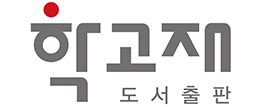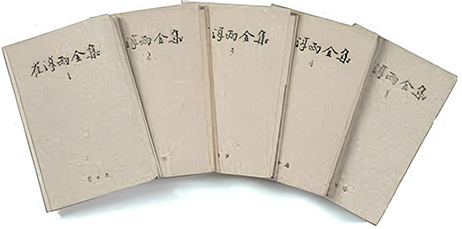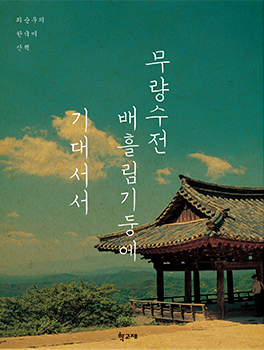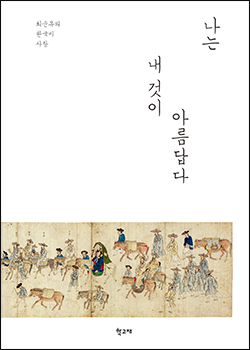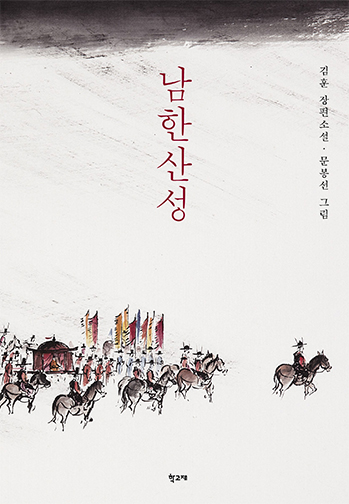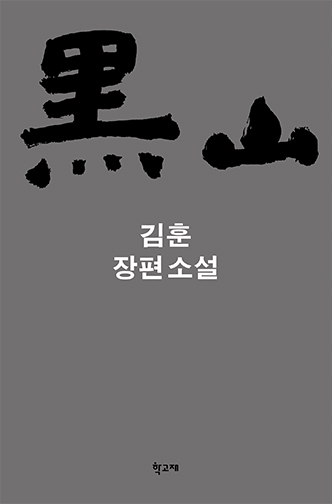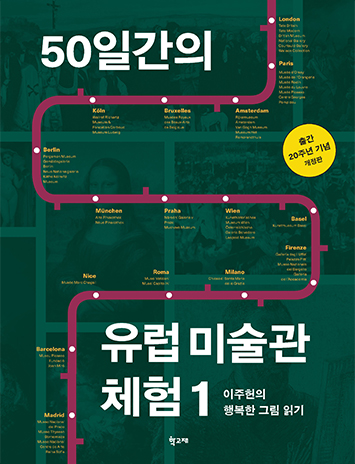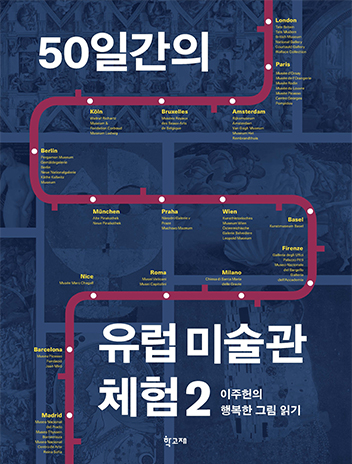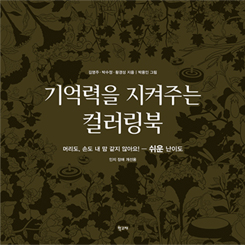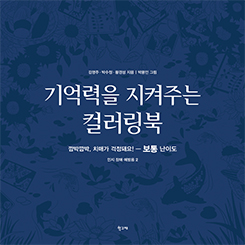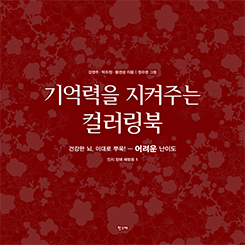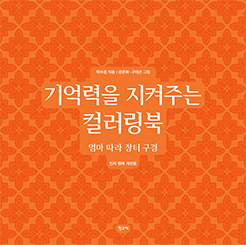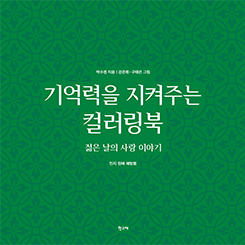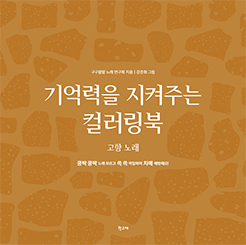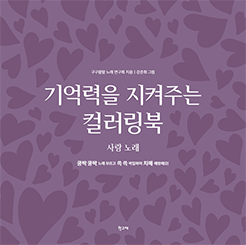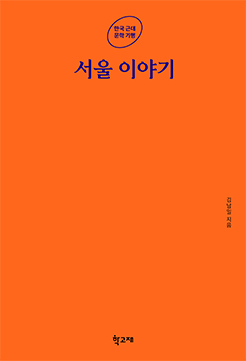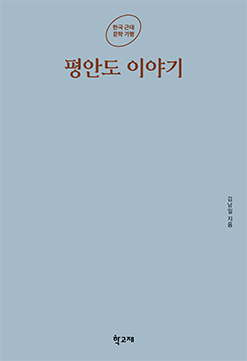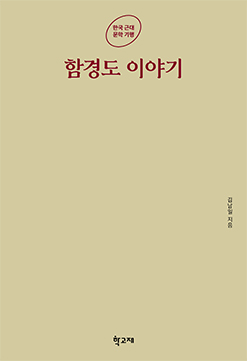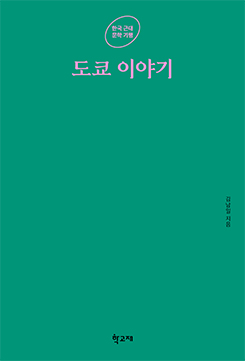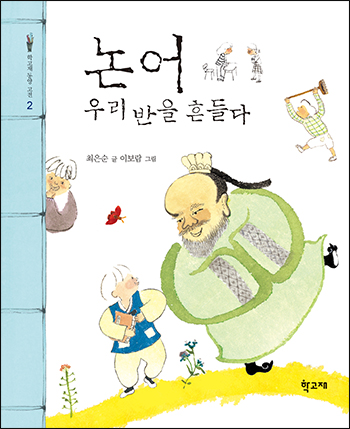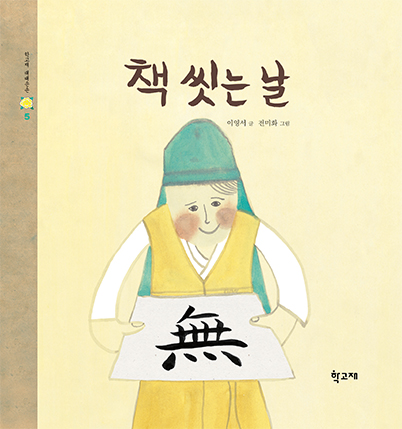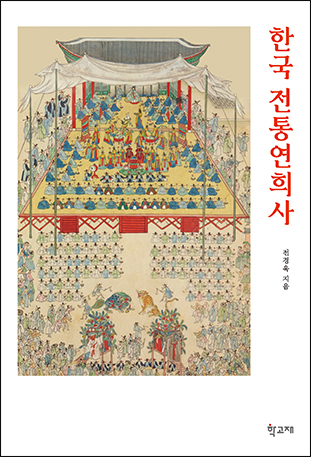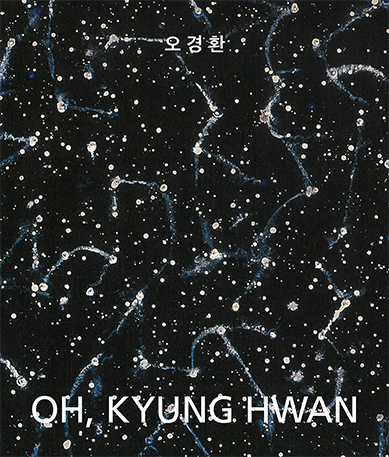|
Korean Publishers
Hakgojae Publishers Turning the Old Into the New, Towards a Broader, Richer Future
2023.12.04
A new trend in Korea - newtro (a newly coined word combining “new” and “retro”) - has recently become popular among the younger generation. It is about finding new meaning and charm in old things and enjoying them as a culture. But even before the word newtro was created, there was a publishing company that worked tirelessly to promote the beauty of Korea on the global stage with such a spirit. Hakgojae Publishers, a publisher founded in 1991, has been at the forefront of exploring Korean culture and beauty for over 30 years. It is also a company that cherishes the past yet gradually broadens its horizons according to the changing demands of readers and the needs of the times, receiving encouragement and acclaim from Korean readers beyond recognition. Hakgojae Publishers, which has been committed to promoting the true beauty of Korea, is ready to tell the entire story to readers around the world as the “K-craze” sweeps the world. Following is an interview with Hakgojae Publishers, a company creating new value from the old.
Korean and English logos of Hakgojae Publishers

It’s an honor to have you with us on K-Book Trends. Please introduce your company to our international readers along with the meaning of the company’s name.
Hello, we are Hakgojae Publishers. The name of Hakgojae Publishers (學古齋) stems from the Chinese classic, ongojisin (溫故知新) which means “to learn the old and create the new.” Learning the old and creating the new doesn’t just mean accumulating knowledge of the past; it is the spirit of ongojisin at Hakgojae Publishers, which is to position ourselves on the basis of accurate perception and criticism of the old, and to create something new on that basis, contributing to the world’s cultural currents. Publishing Choi Soon-Woo’s The Choi Soon-Woo Complete Collection and Leaning Against the Entasis Solumns at Muryangsujeon Hall, as well as Kim Hoon’s Namhansanseong Fortress, Hyecho’s Wang-Ocheonchukguk-Jeon, and A Journey Through Modern Korean Literature series, we have been a pioneer in the exploration of Korean culture and beauty since the foundation of the company in 1991, standing at the forefront of promoting the genuine aspects of Korean culture and the humanities spirit.
It is the ongojisin spirit of Hakgojae Publishers to build a stream of world culture, starting with an accurate recognition of the past.

The background of your publishing house is unique. It started as a gallery specializing in classic calligraphy in 1988 and was expanded into a publishing house specializing in art and cultural heritage in 1991. Why and how did you expand your business from a gallery to a publishing house?
When you think of “Hakgojae Publishers,” some people think of a publishing company, and some people think of a gallery. That’s right. Hakgojae Publishers started as a gallery named Hakgojae. In 1988, Hakgojae, a gallery specializing in classic calligraphy in Insa-dong, Seoul, opened its doors with the spirit of ongojisin. This spirit extended beyond the gallery to an interest in Korean culture as a whole, and in 1991, Hakgojae Publishers was founded and became a leading publisher in promoting Korean culture. The first book Hakgojae Publishers produced as a publisher in 1992 was The Choi Soon-Woo Complete Collection. At the time, many publishers were reluctant to publish a complete collection that cost more than 100 million won for production. Still, Hakgojae Publishers boldly took on the task despite being a fledgling publishing house. It was Hakgojae Publishers’ mission to publish books by Choi Soon-Woo, a leading Korean art historian and the fourth director of the National Museum of Korea, who dedicated his life to promoting the beauty of Korea and preserving and exhibiting our cultural heritage. Since then, excerpts from The Choi Soon-Woo Complete Collection have been published as Leaning Against the Entasis Solumns at Muryangsujeon Hall in 1994, and I Find My Things Beautiful in 2002. These books are now Hakgojae Publishers’ bestsellers.
The first books published by Hakgojae Publishers - The Choi Soon-Woo Complete Collection, Leaning Against the Entasis Solumns at Muryangsujeon Hall,

You started out as a publisher specializing in art and cultural heritage, but now you publish books in various fields, including literature, such as fiction and non-fiction, and economics. Art and cultural heritage can be a bit difficult for the general public to absorb - is the expansion also related to broadening the publisher’s target audience? Please tell us about the reasons for the expansion.
As you mentioned, we initially published The Choi Soon-Woo Complete Collection, followed by Calligraphy of the Mid-Joseon Dynasty, Paintings and Writing of the Late Joseon Dynasty, Traditional Korean Paintings, and Beautiful Korean Ceramics, which served as a guide to explore the aesthetics of Korean culture. Since the 2000s, Hakgojae Publishers has expanded its horizons step by step by publishing books that explore the universality of humanity and reveal the true nature of our culture and humanistic spirit in this era, such as Kim Hoon’s Namhansanseong Fortress, Hyecho’s Wang-Ocheonchukguk-Jeon, and Traditional Performing Arts of Korea. The expansion of Hakgojae Publishers’ reach from the center of art and cultural heritage to the overall culture and humanistic spirit can be seen as a result of the demands of the times and Hakgojae Publishers’ spirit of learning from the old and creating the new. Readership has also expanded as a result.

It has been described that Hakgojae Publishers, which has been in business for more than 30 years, has a depth of flavor that is like a long-stored wine. Could you tell us a bit about what has kept you publishing for so long and the know-how you have accumulated over the years?
Hakgojae Publishers opened its doors in 1991, and it has been 33 years now. Throughout the years, many book editors who love Korean culture and strive to spread its values have worked for Hakgojae Publishers. We believe that their efforts, along with those of our founder, have been the power behind the establishment and continuation of Hakgojae Publishers today. The Hakgojae Publishers’ New Books series started in 1995 with Choi Soon-Woo’s Leaning Against the Entasis Solumns at Muryangsujeon Hall, which depicts the beauty of our nature and art, and has since published many classics that contain not only the essence of our culture, but also the cultures of the East and West. During this time, we created a new form from the traces of our art, not only in terms of content, but also in terms of format and design, which led to the creation of the phrase “Hakgojae Publishers Edition” in the world.
Hakgojae Publishers is pursuing new changes, not only in the content of the books, but also in their design.

What is the book that best represents the identity of Hakgojae Publishers?
Our representative books, which represent the identity of Hakgojae Publishers, can be broadly categorized into Korean culture books, humanities books, art books, books on Korea’s intellectual legacy, and practical books.
* K-Book Trends Vol. 56 – Go to the article about Namhansanseong Fortress
Namhansanseong Fortress and Black Mountain
The third representative art book is 50-Day Journey in European Museums by art critic Lee Ju-Heon. In 1995, Lee Ju-Heon wrote this book about his 50-day journey through European museums with his family. He shared his vivid experiences and appreciation of artworks in simple language, making European art accessible to even the most non-artistic people. On the occasion of the 20th anniversary of the book’s publication in 2015, Lee Ju-Heon took a second trip of 30 days and published a revised edition of 50-Day Journey in European Museums, making it an “80-day journey” rather than a 50-day trip. The revised edition features 44 museums in 16 cities across 10 countries (the UK, France, Netherlands, Belgium, Germany, Czech Republic, Austria, Switzerland, Italy, and Spain). The book includes dozens of new museums from the previous edition, as well as updates to existing museums. It replaces guidebooks for those traveling to European art museums by offering basic knowledge of Western art history as well as the writer’s impressions. It was selected as an “Excellent Book Recommended by the Gyeonggido Office of Education in 2003” and a “Must Read Book for Young People by the POSCO Educational Foundation in 2005.”
50-Day Journey in European Museum 1, 2 and Hyecho’s Wang-Ocheonchukguk-Jeon
The fifth representative practical book is the Coloring Book for Your Memory series. Published in 2018, this book is a series that focuses on the needs of new readers and contains a program of cognitive activities tailored to the needs of the elderly. The book provides difficulty levels that take into account the poor eyesight and slower fingering of older adults, and encourages brain activities that are directly related to their daily lives to prevent their concentration and memory from deteriorating. It stimulates memory in a healthy way with materials that bring back good memories of the past. It also provides effective cognitive training by connecting brain recognition and free hand movement through coloring. In addition, the design and style preserve their taste, self-esteem, and sense of accomplishment. The series has been adopted as teaching materials by more than 200 dementia care centers nationwide. Hakgojae Publishers will continue to publish the series in the future.
The Coloring Book for Your Memory series published up to date

You recently published four books in the A Journey Through Modern Korean Literature series at the same time: The Seoul Story, The Pyeongando Story, The Hamgyeongdo Story, and The Tokyo Story. It must have been a huge undertaking. It is quite surprising that you published four books covering modern Korean literature at once, especially nowadays when people prefer smaller books and lighter stories. Can you give us a brief introduction to the books and how they were planned and published?
Novelist Kim Nam-Il has embarked on a grand project called A Journey Through Modern Korean Literature series, which includes The Seoul Story, The Pyeongando Story, The Hamgyeongdo Story, and The Tokyo Story. It is a kind of travelogue, or a navigation of literary history, that closely explores the modernity of this land using literature as a map, created out of our interest and love for literature as novelists. The four books took almost three years from planning to publication. The series focuses on demonstrating vividly where modern Korean literature is rooted and what kind of features it has. That is why we adopted the “literary travelogue” format from the beginning, instead of a formal framework of literary history. Using old literary works as coordinates, we travel back through the cities, villages, mountains, and fields depicted in the novels and look at the people and lives behind the scenes. The vast A Journey Through Modern Korean Literature series was also intended to be a story that can be read like a novel and draw the big picture of Korean literary history on its own.
The Seoul Story, The Pyeongando Story, The Hamgyeongdo Story, and The Tokyo Story

While most of Hakgojae Publishers’ books target mature audiences, its children’s books also stand out. It is impressive how it manages to incorporate Eastern classics like Mencius and Caigentan into children’s daily lives and explain them in a simple way. How do Hakgojae Publishers’ children’s books differ from those of other publishers?
Around 2010, we attempted to broaden our offerings to include children’s books based on our accumulated text production and design capabilities. As a result, we have published a variety of children’s books based on Korean culture, Eastern and Western classics, such as the Hakgojae Publishers’ Eastern Classics series, the Let’s Learn About Multi-Culture series, the Hakgojae Publishers’ Traditional Life series exploring the traditional life of Koreans, and the Hakgojae Publishers’ Steel Key series featuring our food and culture. Hakgojae Publishers’ children’s books are storytellers that use classics and Korean culture as leverage, borrowing from the way we encounter the old in children’s daily lives and the way we find the lives of children today in the old to translate them into pictures and texts. This is perhaps what distinguishes our books from other children’s books: we embody the spirit of ongojisin in them.
Confucius Analects Shake Our Classroom and Celebrating the Mastery

How do you discover good writers or content, and what are some of the things you pay attention to make Hakgojae Publishers’ books competitive?
Finding good writers and content is the most important task that all publishers struggle with, and we do not have a special solution. Our editors meet with many external experts and search for a lot of materials, and based on this, we create keywords and plan content through internal editorial meetings. We find writers and content in a variety of ways, including finding the most suitable authors, discovering quality content from submissions and various content platforms, and seeking out writers who come to Hakgojae Publishers directly because we have a reputation as a publisher that produces quality books. Many of our best-selling books and the know-how contained in them are also our competitive advantage. In addition to this know-how, how to communicate with new generations to create and discover new content is currently a concern for Hakgojae Publishers.

Are there any books from Hakgojae Publishers that you would like to introduce to international readers?
We would like to recommend Namhansanseong Fortress by Kim Hoon and Leaning Against the Entasis Solumns at Muryangsujeon Hall by Choi Soon-Woo, but since they were introduced earlier, we will leave them out. Instead, we would like to introduce three books that exemplify Korean values like these two.
Traditional Performing Arts of Korea, Advertisement Genius Lee Je-Seok, and Oh Kyung-Hwan’s Art Brochure
Jeon Kyung-Wook, author of Traditional Performing Arts of Korea, is one of the most extensive and unrivaled researchers on the subject of “traditional play” in Korea. The author, who majored in classical novels and oral literature, has spent the past 30 years meticulously researching the history of Korean traditional mask play, puppetry, tightrope walking, acrobatics, witchcraft, pungmul, shamanism, pansori, witticisms, and nongak. His research ranges from performance-oriented field performances such as Bukcheongsaengnori, Bongsan Mask Play, and Yangju Byeolsandae Nori, to East Asian shamanism that serves as the spiritual background of the arts and culture. Of course, it also includes the study of folk-based Jangbadak plays, as well as specialty theater cultures such as royal events and court performances. It is a natural extension of finding the origins of our traditional dramatic arts, defining their meaning and scope, and analyzing performance forms that have changed over time. As a scholar of comparative East Asian cultural history, author Jeon Kyung-Wook has not only analyzed Korean, Chinese, and Japanese folk performance culture in detail, but has also extensively studied cases from the West, China, and Japan to shed light on the cultural uniqueness and universality of Korean traditional performing arts. The results of his long and diligent collection and comparative analysis of scattered field records and materials have contributed to the field of Korean studies as a valuable database in the field of traditional performing arts.
We will fulfill the duty of Hakgojae Publishers through close communication with readers and high-quality content development.

We look forward to the future of Hakgojae Publishers - a publisher that puts timeless values into books. Could you tell us about your new publication plans and future goals?
The way we consume content is changing rapidly. While the quality and value of content are important, if you don’t interact with readers, it will be wasted. Hakgojae Publishing has two goals: to expand the areas and ways to communicate with the public, and to discover high-quality content. Hakgojae Publishers has completed projects that are difficult for anyone to undertake, such as the A Journey Through Modern Korean Literature series and the Dictionary of Urban Planning Concepts. The work of discovering and protecting value will continue in the future.
#Hakgojae#Ongojisin#Gallery#Korean culture#One-Source Multi-Use |
Pre Megazine
-

Jakkajungsin Publishing Co.
VOL.69
2024.04 -

Writer Yun Jung-Eun
VOL.69
2024.04 -

Jumping Books Publishing House
VOL.68
2024.03 -

Writer Kim Hwa-Jin
VOL.68
2024.03 -

Publisher Hyohyung
VOL.67
2024.02 -

Writer Minha
VOL.67
2024.02 -

Almond Publishing
VOL.66
2024.01 -

Writer Kwon Jung-Min
VOL.66
2024.01 -

Hakgojae Publishers
VOL.65
2023.12 -

Writer Kim Hye-Jung
VOL.65
2023.12 -

Eidos Publishing House
VOL.64
2023.11 -

Writer Hwang In-Chan
VOL.64
2023.11 -

Munhakdongne
VOL.63
2023.10 -

Writer Chang Kang-myoung
VOL.63
2023.10 -

Happywell Publishing
VOL.62
2023.09 -

Writer Baik Soulinne
VOL.62
2023.09 -

Dasan Contents Group (Dasan Books)
VOL.61
2023.08 -

Writer Lim Kyoung-Sun
VOL.61
2023.08 -

SpringSunshine Publishing Co.
VOL.60
2023.07 -

Writer Lee Kyung-Hye
VOL.60
2023.07 -

Human Cube
VOL.59
2023.06 -

Doctor Jeong Jae-Seung
VOL.59
2023.06 -

Anonbooks
VOL.58
2023.05 -

Writer Son Bo-Mi
VOL.58
2023.05 -

Namhaebomnal
VOL.57
2023.04 -

Writer Kim Bo-Young
VOL.57
2023.04 -

Hugo Publishing
VOL.56
2023.03 -

Writer Cho Kwang-Hee
VOL.56
2023.03 -

Balgeunmirae Publishing Co.
VOL.55
2023.02 -

Writer Lee Byung-Ryul
VOL.55
2023.02 -

Wisdom House, Inc
VOL.54
2023.01 -

Writer Jeong Jia
VOL.54
2023.01 -

Humanitas
VOL.53
2022.12 -

Writer Kim Yeon-Su
VOL.53
2022.12 -

Songsongbooks
VOL.52
2022.11 -

Writer Eun Hee-Kyung
VOL.52
2022.11 -

Bombom Publishing Co.
VOL.51
2022.10 -

Writer Jiwon Yu
VOL.51
2022.10 -

Hangilsa Publishing Co., Ltd.
VOL.50
2022.09 -

Writer Kim Won-Young
VOL.50
2022.09 -

Moksu Publishing Company
VOL.49
2022.08 -

Writer Yoo Sun-Kyong
VOL.49
2022.08 -

Next Wave
VOL.48
2022.07 -

Writer Park Sang-Young
VOL.48
2022.07 -

A Thousand Hopes
VOL.47
2022.06 -

Writer Bora Chung
VOL.47
2022.06 -

Woongjin ThinkBig
VOL.46
2022.05 -

Dr. Oh Eun-Young
VOL.46
2022.05 -

JECHEOLSO Publishing House
VOL.45
2022.04 -

Writer Jang Ryu-Jin
VOL.45
2022.04 -

Changbi Publishers
VOL.44
2022.03 -

Writer Kim Ho-Yeon
VOL.44
2022.03 -

Mati Books
VOL.43
2022.02 -

Writer Lee Kkoch-Nim
VOL.43
2022.02 -

Picturebook Gongjackso
VOL.42
2022.01 -

Writer Kim Sang-Wook
VOL.42
2022.01 -

Writer So-yeon Park
VOL.42
2022.01 -

Writer Yoo Eun sil
VOL.42
2022.01 -

Kungree Press
VOL.41
2021.12 -

Writer Kim Lily
VOL.41
2021.12 -

Writer Park Yeon-jun
VOL.41
2021.12 -

Writer Yi Hyeon
VOL.41
2021.12 -

A deeper world told through picture books 'Iyagikot Publishing (Story Flower)'
VOL.12
2019.06 -

Author Jeon Min-hee
VOL.12
2019.06 -

Illustrator Kim Hwan-Young
VOL.13
2019.07 -

Travelers sailing through the sea of knowledge - 'Across Publishing Group Inc.'
VOL.13
2019.07 -

Genre Novel Publisher 'Arzak Livres'
VOL.14
2019.08 -

Author Lee Yong-han
VOL.14
2019.08 -

Wookwan Sunim
VOL.15
2019.09 -

East-Asia Publishing
VOL.15
2019.09 -

Author Jo Jung-rae
VOL.16
2019.10 -

EunHaeng NaMu Publishing
VOL.16
2019.10 -

Writer Heo Kyo bum
VOL.40
2021.11 -

Writer Kim So-Young
VOL.40
2021.11 -

Author-illustrator Kim Sang Keun
VOL.40
2021.11 -

ACHIMDAL BOOKS
VOL.40
2021.11 -

Author Kang Gyeong-su
VOL.17
2019.11 -

Moonji Publishing Belongs to the Literary Community
VOL.17
2019.11 -

Author Kim Yun-jeong
VOL.18
2019.12 -

I-Seum
VOL.18
2019.12 -

Kim Cho-Yeop
VOL.19
2020.02 -

Creating a window into the future with books
VOL.19
2020.02 -

Author Serang Chung
VOL.20
2020.03 -

Hey Uhm
VOL.20
2020.03 -

Writer Lim Hong-Tek
VOL.21
2020.04 -

BIR
VOL.21
2020.04 -

Writer Song Mikyoung
VOL.39
2021.10 -

Author-illustrator Kim Dong Su
VOL.39
2021.10 -

Writer Lee Seula
VOL.39
2021.10 -

Tabi Books
VOL.39
2021.10 -

Writer Kim Soo-hyun
VOL.38
2021.09 -

Author-illustrator Lee Myoung Ae
VOL.38
2021.09 -

Writer Hwang Sunmi
VOL.38
2021.09 -

Kidari Publishing Co.
VOL.38
2021.09 -

Writer Sohn Won-Pyung
VOL.22
2020.05 -

Woods of Mind's Books
VOL.22
2020.05 -

Writer Heungeul
VOL.23
2020.06 -

Gloyeon
VOL.23
2020.06 -

Maumsanchaek
VOL.24
2020.07 -

Winners of the 2021 Bologna Ragazzi Award
VOL.37
2021.08 -

Picture book artist Lee Suzy
VOL.37
2021.08 -

Author-illustrator Yi Gee Eun
VOL.37
2021.08 -

Hubble
VOL.37
2021.08 -

Writer Baek Se-Hee
VOL.25
2020.08 -

Bearbooks Inc.
VOL.25
2020.08 -

Author Baek Hee-Na
VOL.26
2020.09 -

Yuksabipyoungsa
VOL.26
2020.09 -

Writer Kang Hwa-Gil
VOL.27
2020.10 -

Kinderland (Bandal)
VOL.27
2020.10 -

Writer Ha wann
VOL.36
2021.07 -

Author-illustrator Myung Soojung
VOL.36
2021.07 -

Writer Jung Yeo-Wool
VOL.36
2021.07 -

Publisher EcoLivres
VOL.36
2021.07 -

Writer Lee Geumi
VOL.28
2020.11 -

Sakyejul
VOL.28
2020.11 -

Writer Kim Keum-Hee
VOL.29
2020.12 -

Geulhangari
VOL.29
2020.12 -

Writer Cheon Seon-Ran
VOL.30
2021.01 -

Hyang Publishing House
VOL.30
2021.01 -

Writer Lee Hee-Young
VOL.31
2021.02 -

Sanzini
VOL.31
2021.02 -

Publisher Prunsoop
VOL.32
2021.03 -

Writer Sim Yun-Kyung
VOL.32
2021.03 -

Hanbit Media
VOL.35
2021.06 -

Hyeonamsa
VOL.33
2021.04 -

Author-illustrator Noh Inkyung
VOL.33
2021.04 -

Writer Cho Won-Jae
VOL.35
2021.06 -

Writer Kim Jung-Mi
VOL.34
2021.05 -

Safehouse Inc.
VOL.34
2021.05


